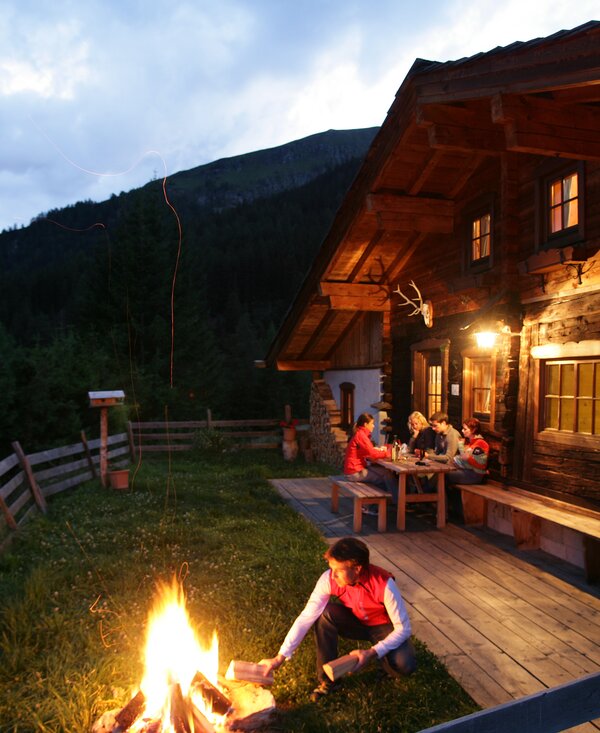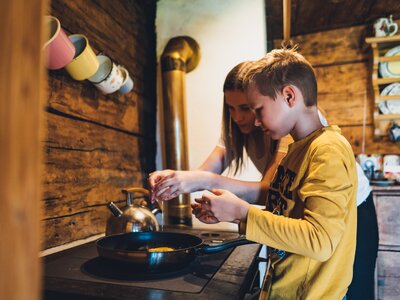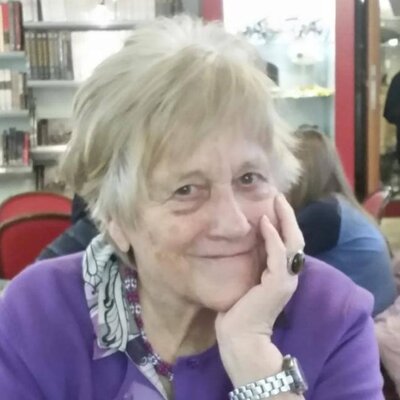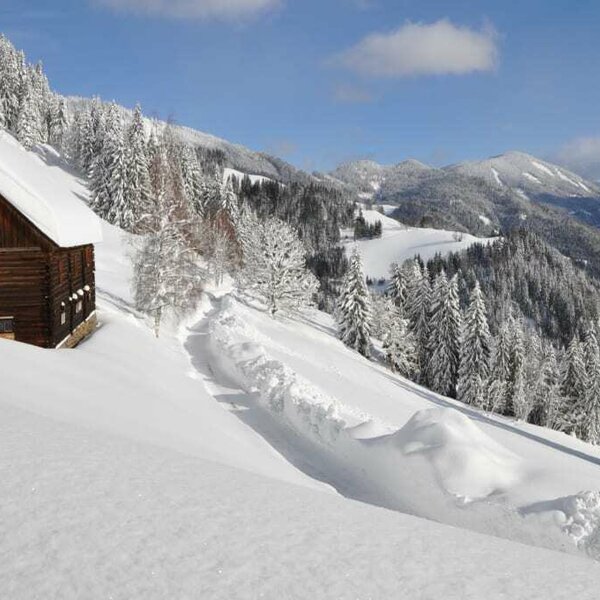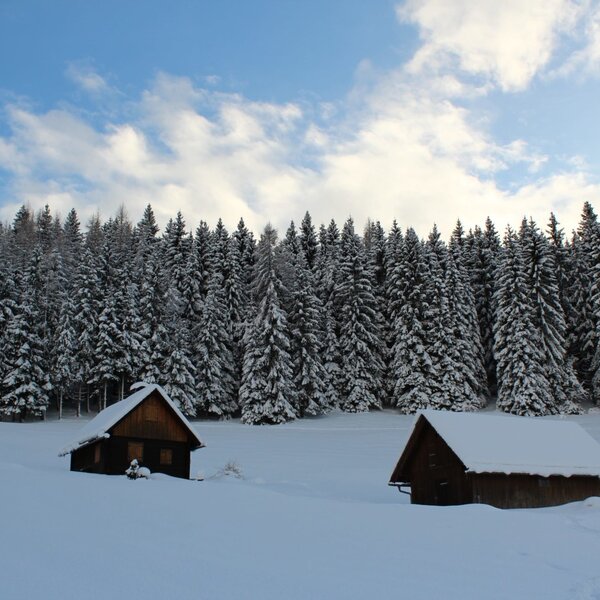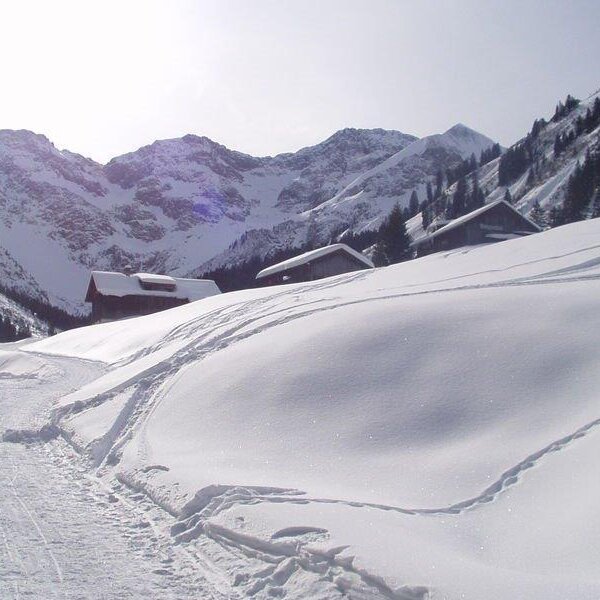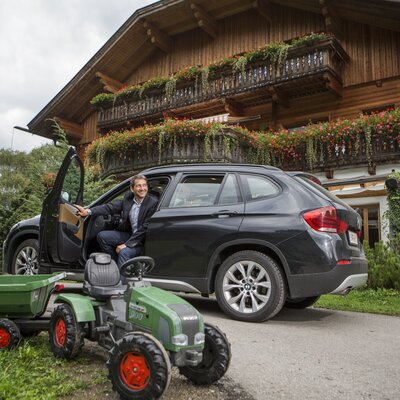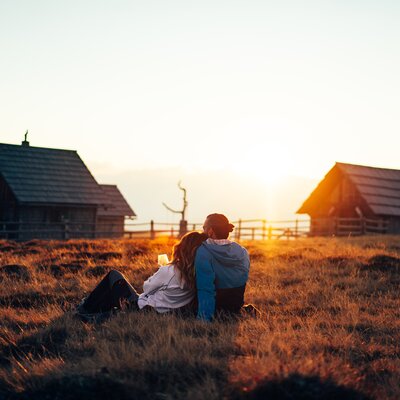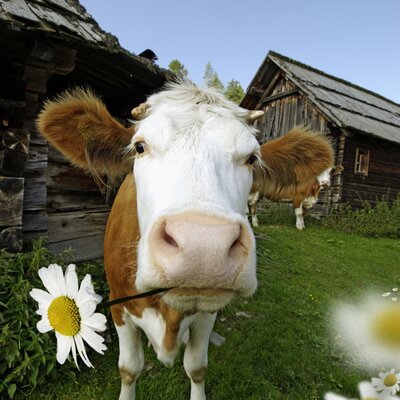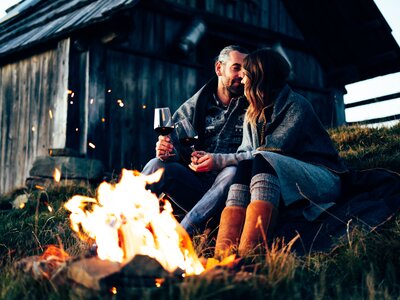
Campfire - romance at its finest
Sure, there are many people, including those from "no-stove homes", who know how to make a fire in a wide variety of fireplaces like the back of their hand. But I think that a few practical tips on making a fire certainly won't do any harm, especially as there are different subtleties to consider for every fireplace, not just in an alpine hut. Making a fire correctly and safely can be very important here. Today I got Amalia and Peter Baumgartner from Wolfsberg to "light the fire". They have been renting out their small but beautiful alpine hut to satisfied guests for many years.
During our fire talk, we initially stay outside the hut door. As we all know, a campfire on an alpine pasture is the dream of many visitors. That's why many mountain huts have already provided a good campfire site. Peter says: "But if you want to build a place yourself, take lots of stones and mark out a space that is not too small. The site must be at a safe distance from bushes, woods, fences and, of course, the hut. Don't make the fire too big, a filled bucket of water - as with the Christmas tree - certainly won't do any harm. If you find a prepared campfire site at the hut, take it for free and don't build another one. The hut owners know exactly where it is safest. There are absolutely no campfires in very dry conditions or in strong winds. Please keep your small children in check in their enthusiasm and explain to the older ones why fire can be dangerous. When leaving the camp site, the fire must be completely extinguished. And one more thing: if you use torches, the same rules apply in principle."
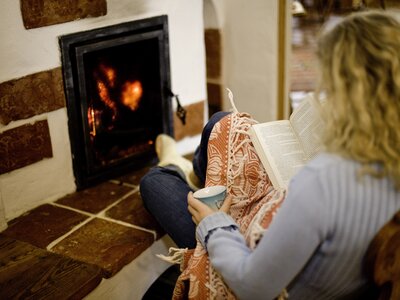
The "king" among the fireplaces
The supreme discipline in the heating sector is probably the tiled stove. Peter explains to me that there are tiled stoves with direct draught, those that are connected to a masonry wood-burning stove and others. The logical consequence of this variety is to ask your alpine hut landlord to explain to you in detail how you should treat your tiled stove. Because every stove is different, with its own characteristics and characteristics. When you visit your hut for the first time, have everything explained and shown to you on site. Don't worry, you won't forgive yourself anything, because nobody knows everything, especially not with a tiled stove that is not their own. I've seen people living in mountain huts who couldn't manage to heat the tiled stove on their own and had to sit in the cold hut in winter. (Thank goodness there was still the aforementioned wood-burning stove in the hut.) Quite apart from the fact that operating a tiled stove incorrectly can also be dangerous for you, the hut and the tiled stove. So, inform yourself well beforehand and act accordingly.
Peter also finds that heating so-called Swedish or wood-burning stoves is much easier. They are available in beautiful designs in many mountain huts, for example with blazing flames behind glass. I have also seen many of them in operation. Nevertheless, it can't be wrong to inform yourself beforehand! By the way: All huts have the utensils you need to make heating up easier. Just ask for them.

The water gets hot in the bathroom
A sensitive issue for me - based on experience - is the heating of wood-burning stoves in bathrooms. I couldn't believe my eyes. A group of young, enthusiastic alpine hut guests were sitting in front of the wood-fired bathing stove, waiting for the temperature display on the bathing stove to finally reach the maximum mark of 130 degrees. Horrible, there was an acute risk of explosion just for the joy of having a fire!
It's best to ask Peter to show you how to heat the heater in the sauna: "The heater in the sauna must be a very special wood-burning stove. I have already shown many, many guests how to heat it. It's actually quite easy, but it still has to be done properly. I also ask all sauna guests not to place anything flammable (towels or clothing!) near the stove, because the whole stove gets very hot. And please keep an eye on your children in the sauna if necessary, as they cannot properly assess the heat of the heater." And my sauna experience adds to Peter's comments. Unfortunately, I have already seen a cabin burn down because of an overheated sauna.
Amalia has a very relaxed relationship with candles in the alpine hut (very romantic!). She provides solid candlesticks in various sizes for the guests' candles. Which, by the way, most landladies do. If necessary, a plate or metal coaster will do for your candle, but this method is only a second choice. Please also be careful with any historic kerosene lamps.
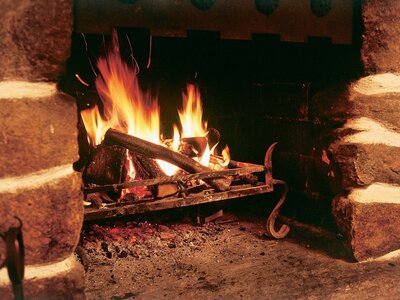
The fiery, golden tip:
It is best to follow the demonstrations and instructions of your alpine farmers, then you are on the safe side. My tip: It's better to be careful in all fire situations than to moan about the bad fire afterwards. If something goes wrong with the fire, don't panic. There is at least one tested portable fire extinguisher in every hut. Find out where it is early on, because prevention is better than cure, i.e. extinguishing. If you pay attention to everything, your hut will be cozy, romantic and above all warm. And all with the help of the fire that you have lit and kept going. Make the "kindling" on the mountain pasture a positive experience for everyone.
Notburga Samrock
12 Article(s)
